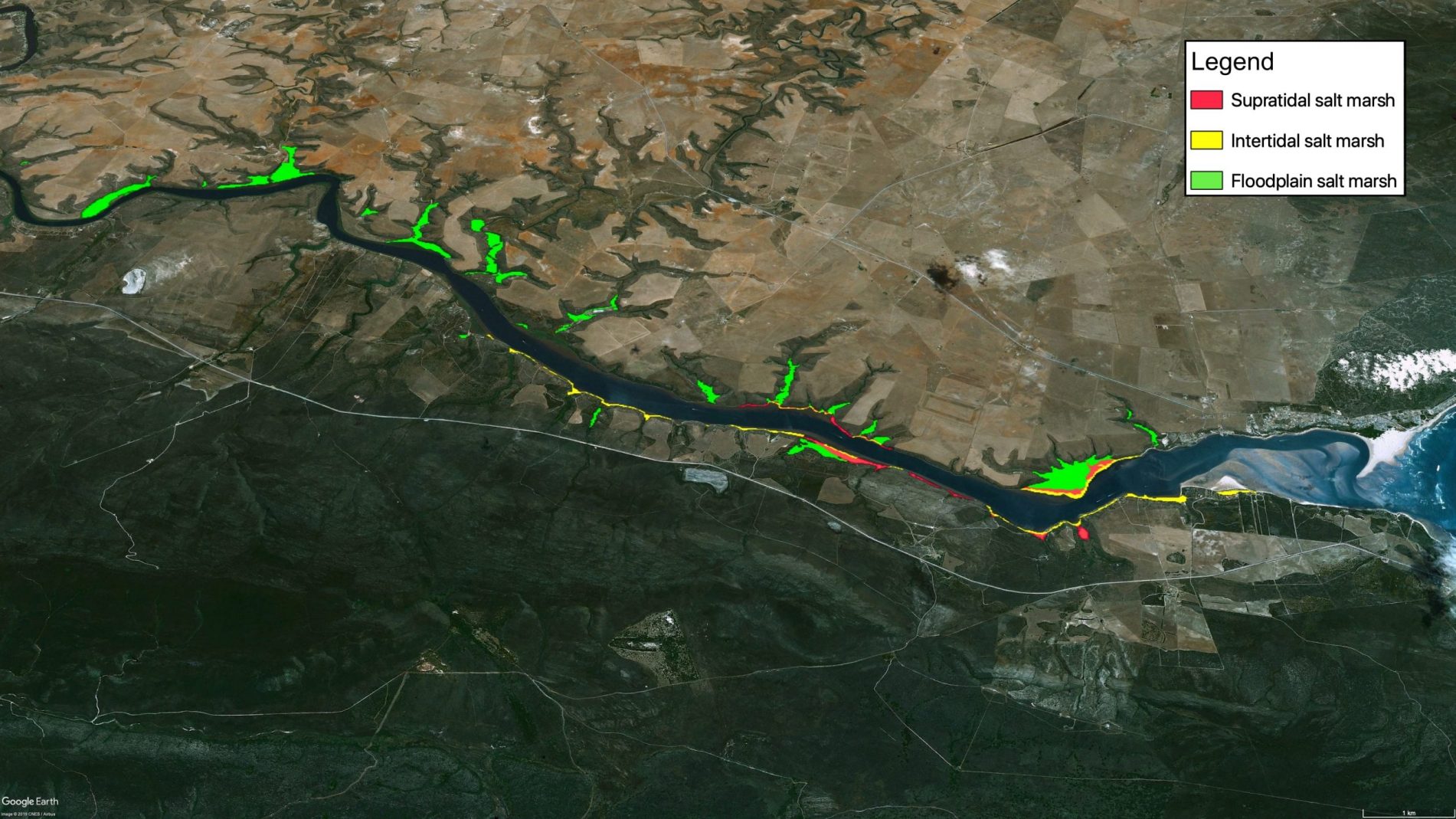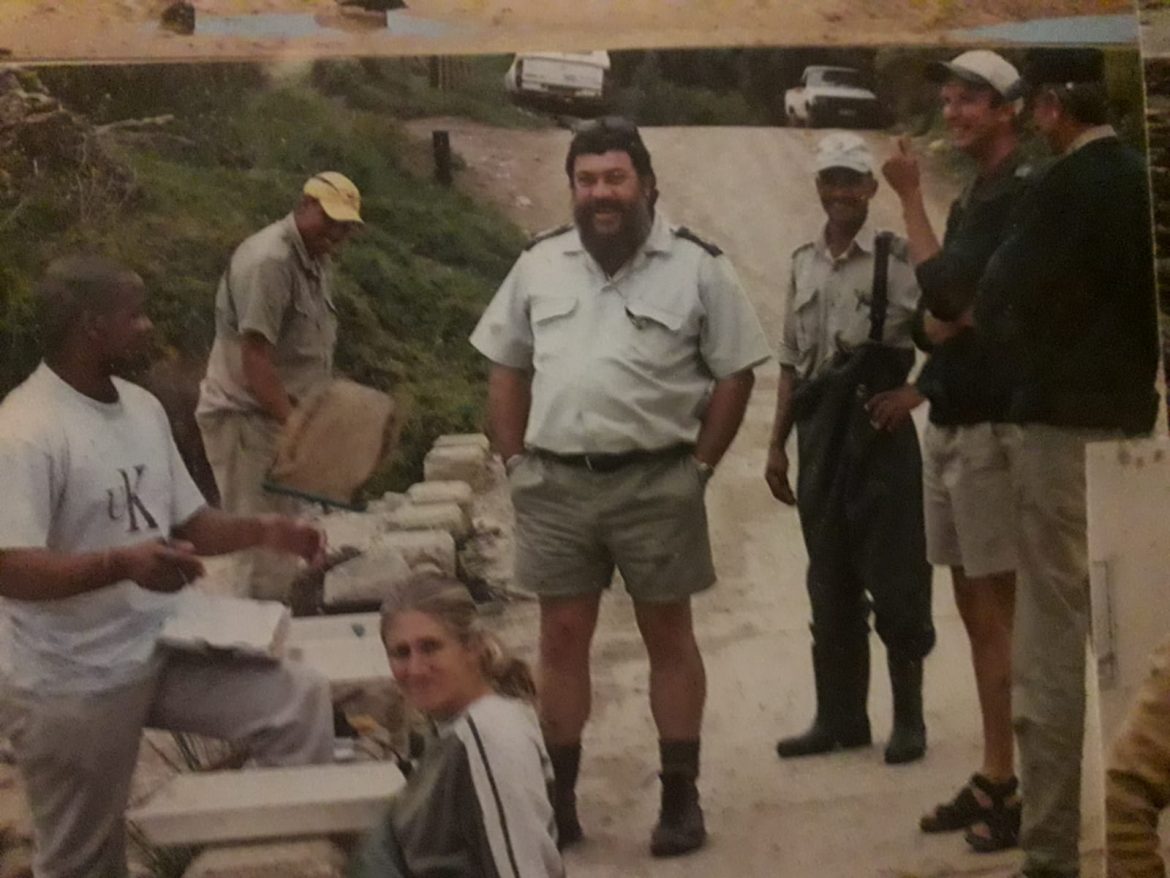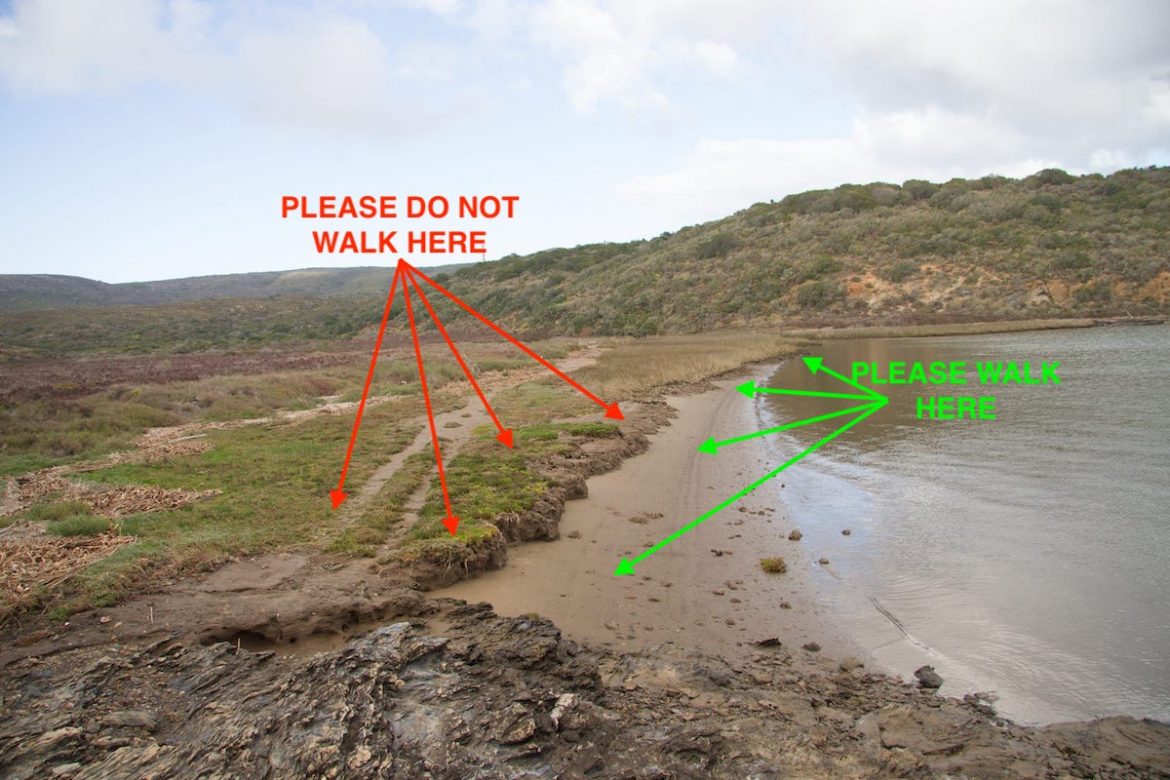RiverWise
Issue 19 ~ October 2019
The monthly newsletter of the Lower Breede River Conservancy Trust
Season & Visitor Checklist
Remember to collect your angling and bait collection permits from your local Post Office during week days. Witsand, Heidelberg and Swellendam Post Offices can run out of stock during peak season due to high demand, and do not sell permits over weekends.
Did you know you can reserve your boat licence online and pay by EFT? Book online and collect at our Witsand office or Malagas Hotel, no more queues and paper forms to complete!
The salt marshes of the Breede
Photos by Craig Midgley.
A salt marsh is a coastal ecosystem in the upper intertidal zone between land and open saltwater that is regularly flooded by the tides. It is dominated by dense stands of salt-tolerant plants such as herbs, grasses, or low shrubs. These plants are terrestrial in origin and are essential to the stability of the salt marsh by trapping and binding sediments. Salt marshes play a vital role in the aquatic food web and the delivery of nutrients to coastal waters. In the Breede we have intertidal marshes that are submerged daily by tides, supratidal marshes which are submerged during spring tides, and flood marshes which are only submerged during floods.
Human impacts
As of 2002, over half of the world's population was estimated to live within 60 km of the coastal shoreline, making coastlines highly vulnerable to human impacts from daily activities that put pressure on these surrounding natural environments. In the past, salt marshes were perceived as coastal 'wastelands,' causing considerable loss and change of these ecosystems through land reclamation for agriculture, urban development, salt production and recreation. Salt marshes are highly productive and biologically diverse coastal wetlands that are threatened by rising sea levels, especially increases in groundwater and sedimentation salinity, and changes to chemical variations caused by climate change, which leads to local extinction.

Map data courtesy of DEA&DP.
Restoration and management
The perception of salt marshes as a coastal 'wasteland' has since changed, acknowledging that they are one of the most biologically productive habitats on earth, rivalling tropical rainforests. Salt marshes are ecologically important providing habitats for crustaceans and fish, and acting as sheltered feeding and nursery grounds.
Although much effort has gone into restoring salt marshes worldwide, further research is needed. There are many setbacks and problems associated with marsh restoration that requires careful long-term monitoring. Information on all components of the salt marsh ecosystem should be understood and monitored from sedimentation, nutrient, and tidal influences, to behaviour patterns and tolerances of both flora and fauna species.
Supratidal salt marsh awareness project
The supratidal marshes represents the smallest and most sensitive habitat by area in the Breede estuary. We have erected signage in Grunter Bay to indicate that wherever possible, please walk on the mud flats as far as possible, and avoid walking on the vulnerable marsh beds which easily collapse and are extremely difficult to rehabilitate.
Last of the real Bokwagters
In memory of Rhett Hiseman - Last of the Real Rugged Bokwagters
We will miss our old friend, but we think our dwindling wildlife will miss him more. He was indeed last of the true conservationists who preferred being in the veld, rather than behind his laptop. His long conservation career included catching big game in Namibia to managing Groenvlei, ending up as manager at Riversdale. He loved the Breede and was always there to help the Conservancy, even lending us his boat for our first 6 months before we got our first one.
Often he would stay at the tiny cabin at Moddergat and he was quite a spectacle there as he came with all his bush-lore paraphernalia. He would have his camping cot set up with mosquito net, pots and pans full of food and chairs around the fire set up in a jiffy. He would never sleep inside and in true bush style would sleep naked under the stars. On one morning his cot had collapsed and him fighting with the contraption, stark naked, while the early fishermen drove past slowly looking at the spectacle. He was not worried what people thought of him as long as he remained true to conservation.
He often had young students accompany him to the Breede where they were forced to eat some oddity as part of their initiation. These included Bokdrolle, live oysters, prawns or his favourite, redbait. On a fish survey once, he choked on a live swimming prawn and astounded all of us by picking up a big bucket of estuary water with both hands and gulped it down. Well it dislodged the prawn in his throat, but he probably also drank a few more species that were in that bucket!
Patrols were also always fun even though he was very strict on any offender messing with the river banks. Once when passing a house near Lemoentuin they came across a property where the reeds were being removed. The owner was a way from the boat, but I remember Rhett shouting at him asking if he liked cabbage? The perplexed owner came closer asking why should he like cabbage. Rhett still shouting told him bluntly “that’s all you are going to get to eat in jail, if you don’t stop your ***!”. That was often Rhetts brand of law enforcement, a bit unconventional, but oddly effective.
Thanks for all the good times and all you did in our area. You will be sorely missed and even though you never finished that book, the stories remain with us.
The photo below shows Rhett with Nick Scholtz and Stiaan Conradie on that fish survey where he quaffed a bucket of water to dislodge a prawn stuck in his throat.

October water quality
The salinity at Gov. Slip which is the closest site to the mouth of the Breede River Estuary was 29.03 PSU (Practical Salinity Units) which is lower than that of seawater (35 PSU) and indicates mixing of freshwater in the system. This brackish water falls under the polyhaline (18 – 29.9 PSU) salinity classification under the venice classification system. Oligohaline (0.5 – 5) salinities were recorded from Ronnies to 35 km upstream, with freshwater conditions (less than 0.5) recorded from Dave Taylor upstream.
All salinity values for the newsletter were recorded at maximum depth in the water column.
Water temperature showed an increasing trend from the mouth towards the pont with peak temperatures in the upper reaches of the estuary. Temperatures above 22 °C were recorded from Riverine upwards. The water temperature at the sites closest to the mouth were around 20.5 °C.
October bird count
The bird count for October kept the LBRCT staff busy with over 680 birds counted between the mouth and the Malgas pont. We were lucky enough to find 35 different species, of which 28 were water-associated species. Several migrant species were recorded, with good numbers of Bar-Tailed Godwits, Grey Plovers and Whimbrels.
The most abundant bird seen on the trip was Common-Ringed Plover with 137 birds recorded. This non-breeding migrant comes from the arctic tundra and are mainly found in southern Africa between October and April. Other interesting birds seen on the trip includes Black-crowned Night Herons, Namaqua Doves, Red-billed Teals and Common Terns.
Terrestrial birds
Water associated birds
October marine debris
The four marine debris surveys during October showed plastic litter once again dominating the litter found by Blokke (75%), Gov. Slip (68%) and Main Beach (84%). Glass pieces often dominates the litter found in our Oysterbeds survey area, but this month it only accounted for 7% of all litter picked up, with plastic-related litter (58.65) being the most abundant litter type this month.
Main Beach had the largest variety of plastic items found from straws, bottle caps, beverage bottles through to nurdles found. Rope pieces from commercial fishing vessels was also quite common on Blokke (11.2%) and Main Beach (10). The beach with the highest contribution of smoking-related litter (cigarette butts, lighters and packaging) was Gov. Slip (6.4%).
Cumulative marine debris collected for all areas:
Thank you for reading
We hope you enjoyed this months' issue. Should you have any feedback, questions, or matters you would like us to cover in a future issue, please do not hesitate to write to us at news@breede-river.org.
